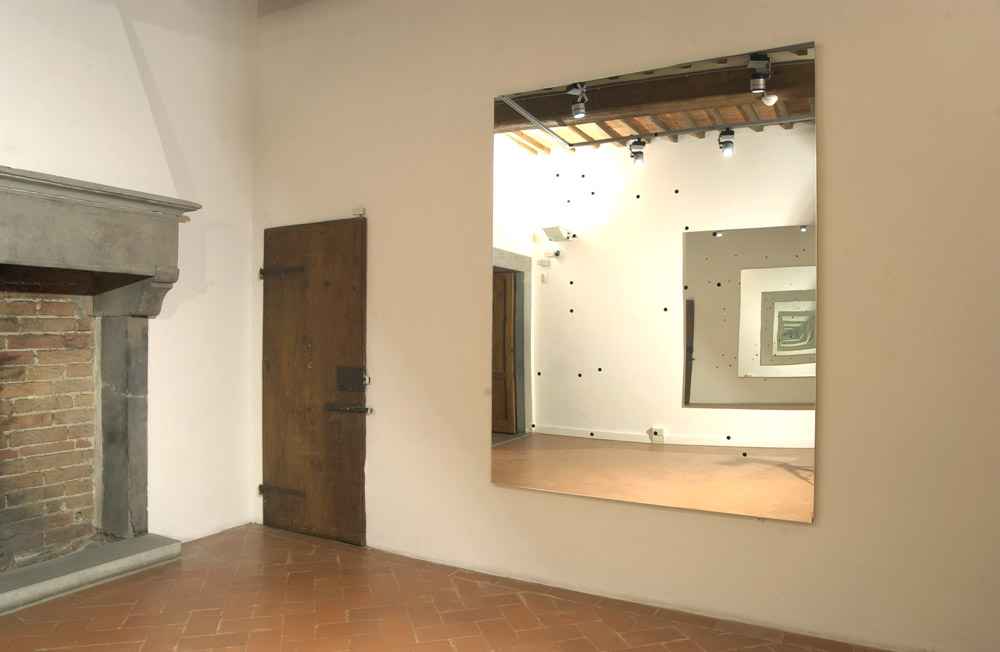Alberto Garutti was born in Galbiate, in the province of Como, in 1948. After earning a degree in architecture from the Politecnico in Milan, he embraced an artistic career in 1975 displaying a sequence of photo images that betrayed strong autobiographical features. Garutti was a professor at the Academy of Brera and at the IUAV University of Architecture of Venice. He chaired the Italian Jury at the latest edition of the Italian Studio Program at the MoMA/P.S.1 in New York. He exhibited at several solo and group shows, including his participation in the Venice Art Biennale (1990, 2003), in the Havana Biennial (2000), and in the Istanbul Biennial (2001). He was commissioned public artworks for various cities and museums: for instance, in Ghent for the S.M.A.K., in Istanbul, and in Kanazawa (Japan) for the 21st Century Museum of Contemporary Art in 2002.

– title: Untitled
– date: 1997
– medium: site-specific installation, mirrors
– size: 170×170 cm each mirror
– description: Architecture was the focus of Garutti’s exploration, specifically addressing the theme of home and daily life in the 1990s, seizing the possibility to construe architecture as the core of everyday life, as a network of relationships. In Garutti’s vision, a symmetrical relationship ties an environment with its inhabitants: his art investigates this relationship stemming from an interior analysis, as in the case of the installation consisting of mirrors that the artist displayed at the solo show held at Casa Masaccio in 1997. In this work, two large mirrors facing each other have holes drilled into their surface that correspond to the position of some objects found in the artist’s living room; the two mirrors reflect the drilled holes infinitely and widen the space. The key element of the installation is the use of the mirror, which – as Garutti specified – “becomes an image only when somebody or something is placed in front of it. A mirror is an absolute blank space, an anonymous space, it belongs to the home, it lives with the home in a condition of total casualness. Only a glance can make it play an active role in art experience; human thought lingers on it only when a gaze catches a glimpse of a room in the reflected image that it returns”.